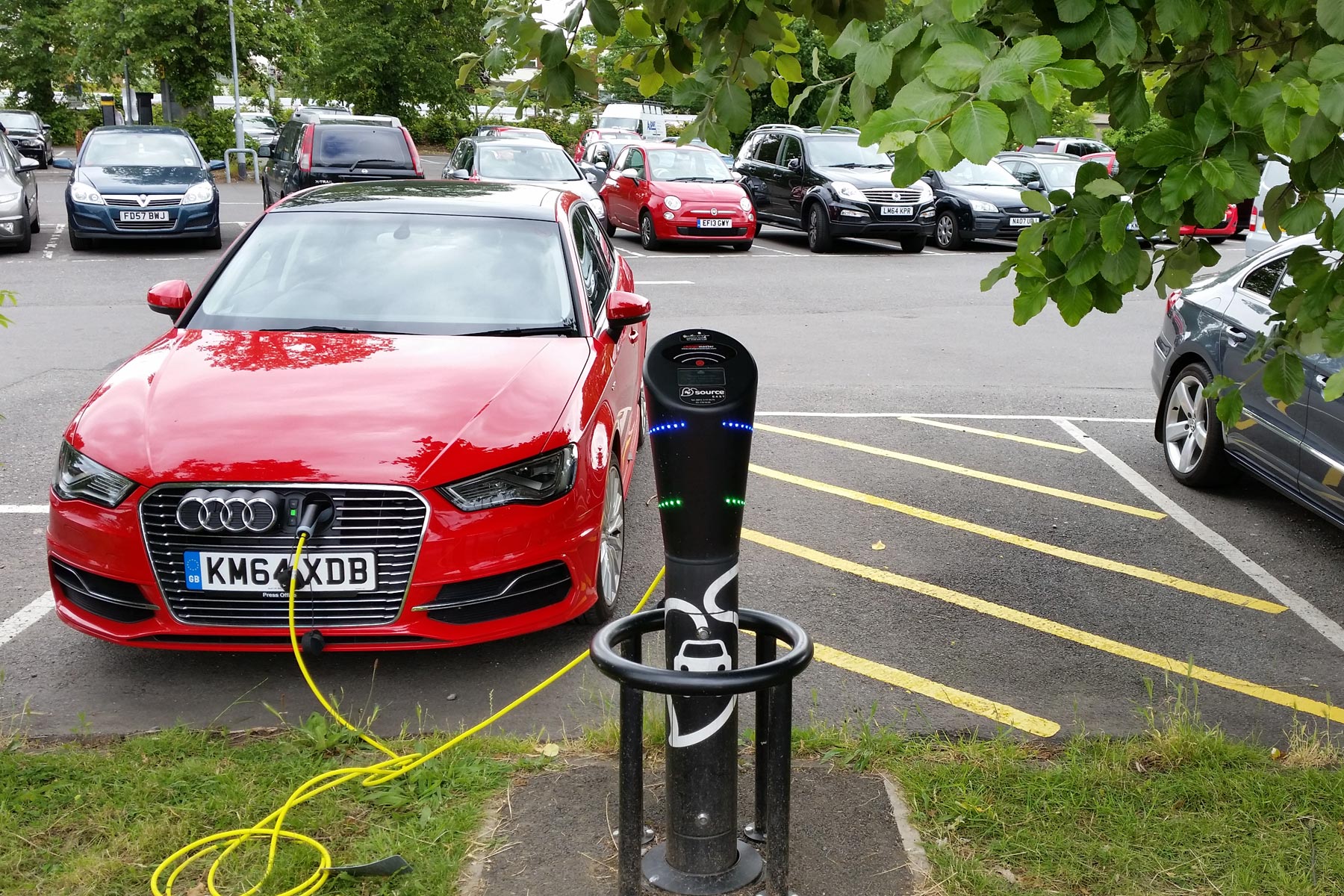Audi A3 Sportback e-tron (2015) long-term review: Final report
Well, the Audi A3 e-tron has returned to Milton Keynes and I am left to reflect on what has been one of the most genuinely interesting six months I have spent with a car.
I suspected it might be as such from the very beginning. Audi’s first mainstream hybrid was going to be a game changer for the company and, being that it’s Audi, it had to be bang on the nail first time out of the box.
And Audi did it – the A3 e-tron is very impressive compact family car. In regular form the A3 was already an award winner. It topped out last year’s World Car Awards, on which I am one of the UK judges, so I knew it had a good starting point.
Audi does the detail stuff extremely well. Things don’t simply look nice, they are usually rather special too – the way the fresh air vents rotate in a finely engineered way, or the precise click as you move a control switch.
On a practical level the A3 is a comfortable four-seater, although the rear seat is set a bit too low for long distance support. Luggage space in the e-tron is compromised by batteries beneath the floor and the charging cables you need to carry about, so you need to factor that in too.
The Price
This is a £35k car before you start adding in options, here starting with the metallic paint and running through bigger wheels, sunroof and leather sports seats. These took it to a touch over £40,000 list, on which there is a £5,000 government grant. For the time being.
Day-to-day
This really is an easy machine to live with, though obsessing about electrical range is a weird thing to be doing in car that has a combined petrol and electrical output of over 200hp. You need to get over that, and simply make the most of driving a plug-in petrol hybrid.
I religiously plugged in as soon as I got home at night – into a 13-amp mains socket. I can’t see the point of having a bespoke faster charger at home for a car with a relatively small battery. You’ll usually just leave it plugged in overnight, which is plenty of time to top it right up.
Away from home I used public charging points, with mixed results. The power points were generally available but parking space around them was a major problem, largely because the general public doesn’t understand. The charging posts rarely have a notice to prohibit parking by petrol or diesel cars, and as a result, the whole, vastly expensive, infrastructure becomes pointless.
When you’ve run out of your battery charge – between 11 and 22 miles – the A3 e-tron reverts to being a regular hybrid, a bit like a Toyota Prius. That’s fine, for it works well and you can still achieve 45-50 mpg on a longer journey.
Driven on purely electric charge, the A3 e-tron is both quick and very quiet. It’s very easy to forget that you are driving an electric car, in fact; the only real difference is an extra 300kg weight that blunts the Audi’s agility a bit. But as a car for commuting, the A3 comes into its own if your journey is less than 15 miles and you can recharge at both ends.
The economics
Owning an electric car, or a plug-in hybrid like this Audi, lures you into a possible delusion that you can get something for nothing. Certainly the public recharging points are “free”, at least after you have paid a £10 annual charge for an access card. But at home you’re going to be paying for that electricity on your monthly bills, like it or not.
How much? That depends upon current energy costs and your deal with your supplier. The Audi A3 e-tron costs, as a guestimate, about £1.30 for a full charge, or less if I’d had a night rate electricity meter at home. That would be pretty good if you got the full 31 miles that Audi claims is capable on electricity alone, but you won’t. The best we saw in summer was the low twenties, while in the cold of winter, with the heater on and the battery less efficient, it dropped to 11 miles.
And I can’t help wondering what the long-term outlook will be for cars like this. There are some serious questions that have yet to be answered. Why should others subside “free” electricity at public charging points? What happens when there are more battery powered cars on the roads and you can never find a free charge point? Finally, what happens when the high cost of these cars stops being partially underwritten by the motor industry?
The environment
Full electric cars and plug-in hybrids like the Audi A3-e-tron are the best possible solution to city driving, with minimal emissions just when you need them. In the e-tron there’s a useful function where you can drive in full hybrid mode on the out-of town part of the journey, leaving full battery power for when you get in town should you feel so inclined.
The e-tron is one of the few cars that qualifies for zero-rating in the London congestion zone, an acknowledgment of its green credentials, and for some that will be enough to give the Audi a “Yes” vote. But there is much more to the A3 e-tron than this. Personally I could live with it long term. But I am not sure that those less committed to the idea would always get around to plugging it every night to make the most of the whole package.
Audi A3 Sportback e-tron (2015) long-term review month 6: Victory!
I have complained before about the difficulty of finding a parking bay adjacent to a public recharging point that hasn’t been already occupied by an “ICE” (internal combustion engine) car. It’s hugely frustrating.
So back in February I started my own personal campaign with St Albans District Council. Here’s what I said:
An enormous sum of money has been spent installing these electric car charging points. St Albans Council is probably pleased that it has made its nod to the environment by facilitating this action. But there is absolutely no point in providing this facility if it cannot be used.
I suggest that you clarify this by marking these bays as obviously dedicated as those for disabled drivers i.e. hatching in the spaces and a sign or two. Easily done.
I had a quick reply.
You are quite right in that any vehicle can use those particular parking spaces and it therefore begs the other question you raise of “what’s the point?” I totally agree that this is something that needs to be addressed. Indeed my colleague has programmed in a change to the Traffic Regulation Order that will allow us to enforce the bays and allow electric vehicles to use them. Until this happens we do not have any legal basis to enforce unfortunately.
Hmm. That had some promise, sort of. The trouble was that the Traffic Regulation Order, when it was published, covered only St Albans, not Harpenden. Despite assurances that it would be dealt with, nothing happened for several months.
Then hallelujah! Yellow stripes appeared last week. Not on both parking places, which makes most sense though would be too much to hope for, but it all helps. Electric car owners in St Albans and Harpenden. You owe Motoring Research a pint of gratitude!
Notebook
- The A3 e-tron comes with automatic transmission as standard, but it’s a double clutch “DSG” box. In e-tron form there’s a bit of a hitch. The A3 will roll forward down a hill, even is Drive or Reverse is selected. That means you needed to engage the electric parking brake in tight manoeuvres. The fact that the brake releases automatically in these situations helps a lot.
Audi A3 Sportback e-tron (2015) long-term review month 5: Long distance glory?
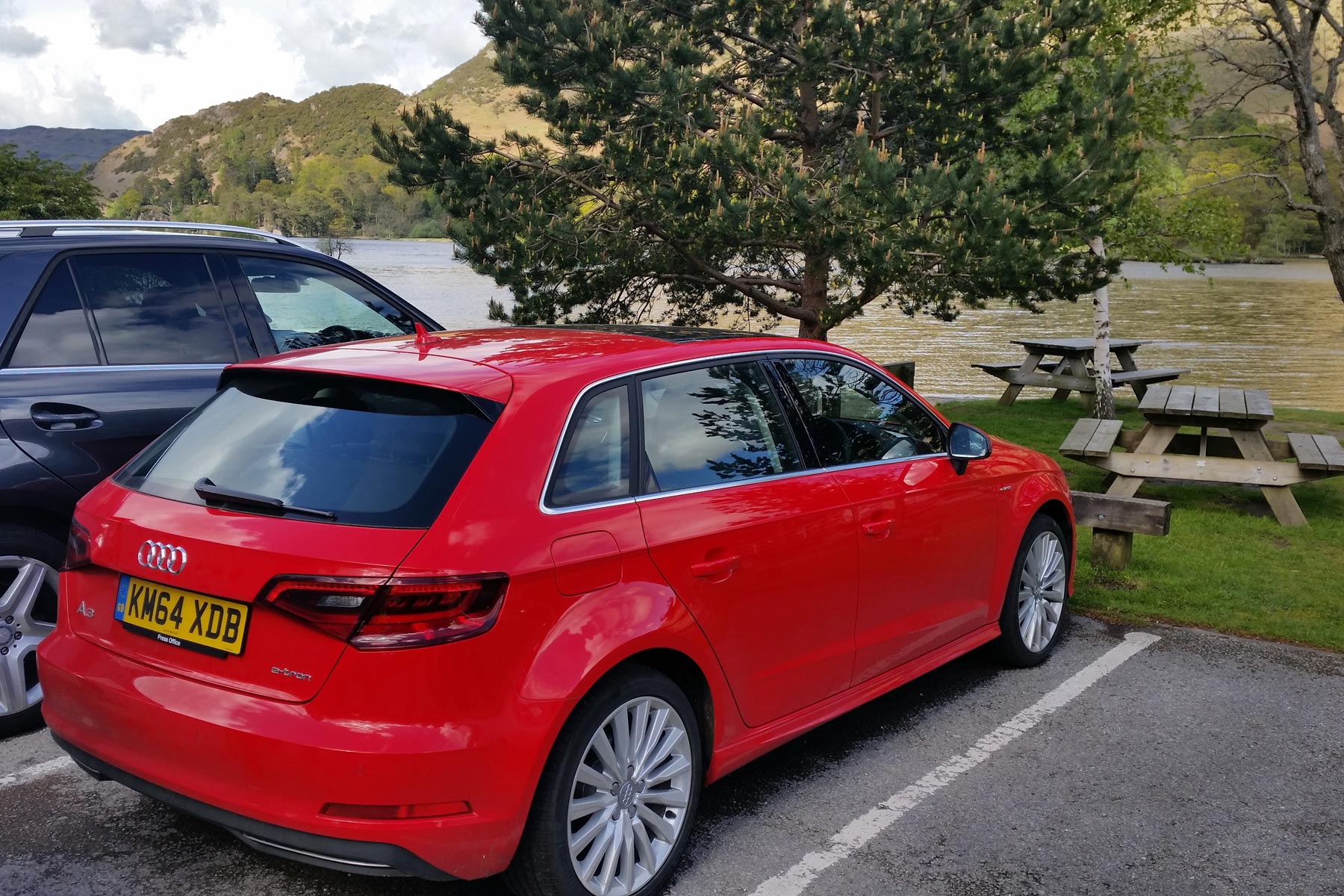
I’d been looking forward to May because I had a trip to Lake District planned with a group of friends. It was to be my first opportunity to a long distance continuously, and to see how the A3 e-tron managed in both terms of performance and economy.
So it was a 7.00am start on bright Sunday morning, with a range of 24 battery miles showing on the trip. I recently had it explained to me by an engineer from Audi that the claimed 31-mile electric range is about as realistic as the 176mpg statutory average fuel economy figure for the A3. The whole car industry needs to pull its socks up here and offer some figures that people can relate to. Rant over.
The plan was to take the M1 and M6 north, and recharge when we stopped for fuel, as long as the motorway services weren’t already full of Nissan Leafs. But the A1 is a much more pleasant drive to the lovely A66 that cuts across from Scotch Corner into Keswick. The trouble with that plan was there were no recharging points within 200 miles from home, and that didn’t fit in with our full English breakfast plans.
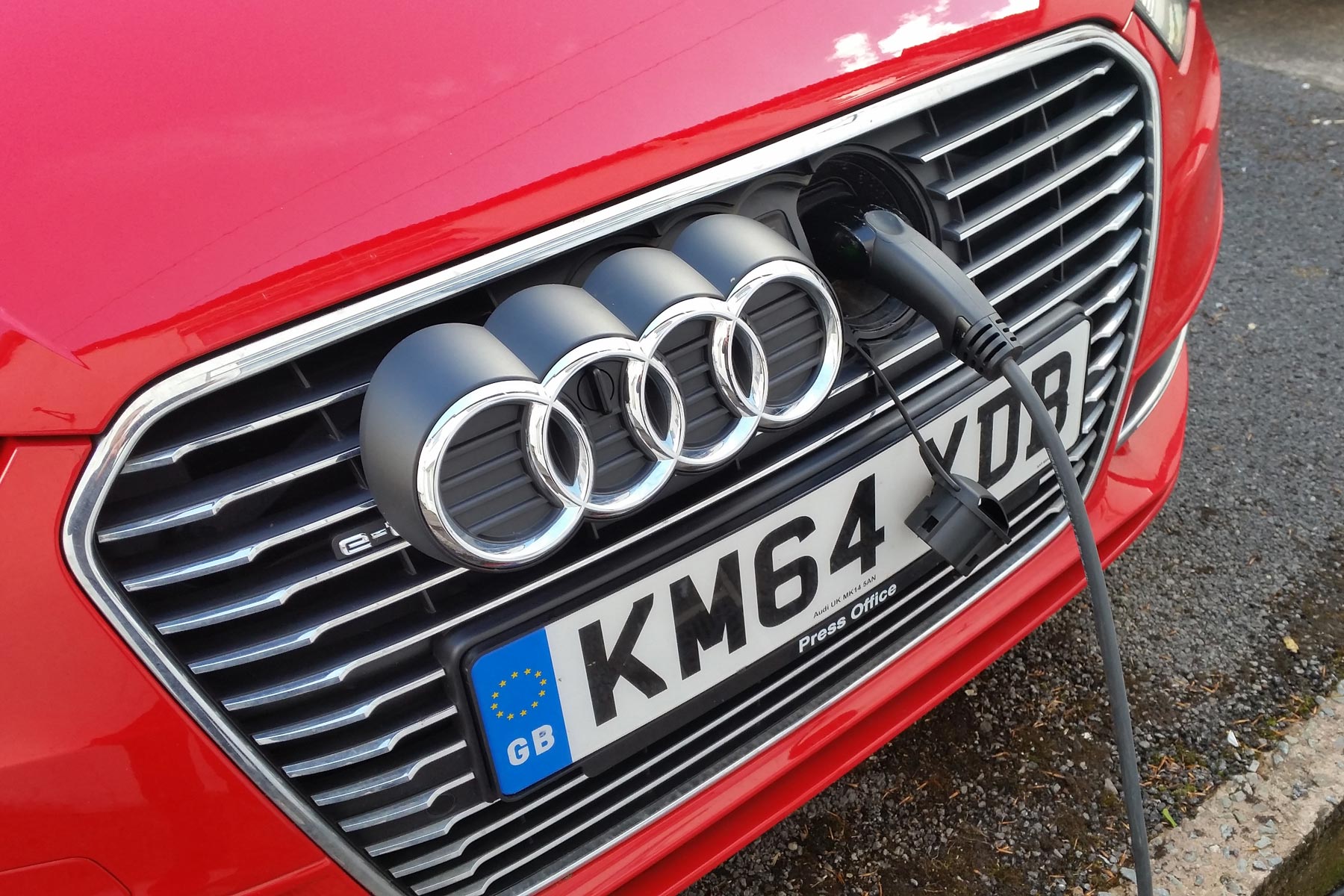
While there are selectable options for the battery usage, I have been assured that leaving it in the default mode is the most economical. That means running on battery power until that is depleted, then automatically switching to the petrol engine. The A3 e-tron the drives in the same way as a Prius, the battery taking on a bit of power when you brake, then using it as required to ease out the economy.
At the Skiddaw Hotel in Keswick a couple of friends had a room in a cottage so we fed the power unit through the window and got in three nights of charging. If you want to do this you have to carry the 13 amp mains charger as well as the cables for the roadside Pod Points, so there’s extra clutter in a boot that’s already smaller than the regular A3 Sportback.
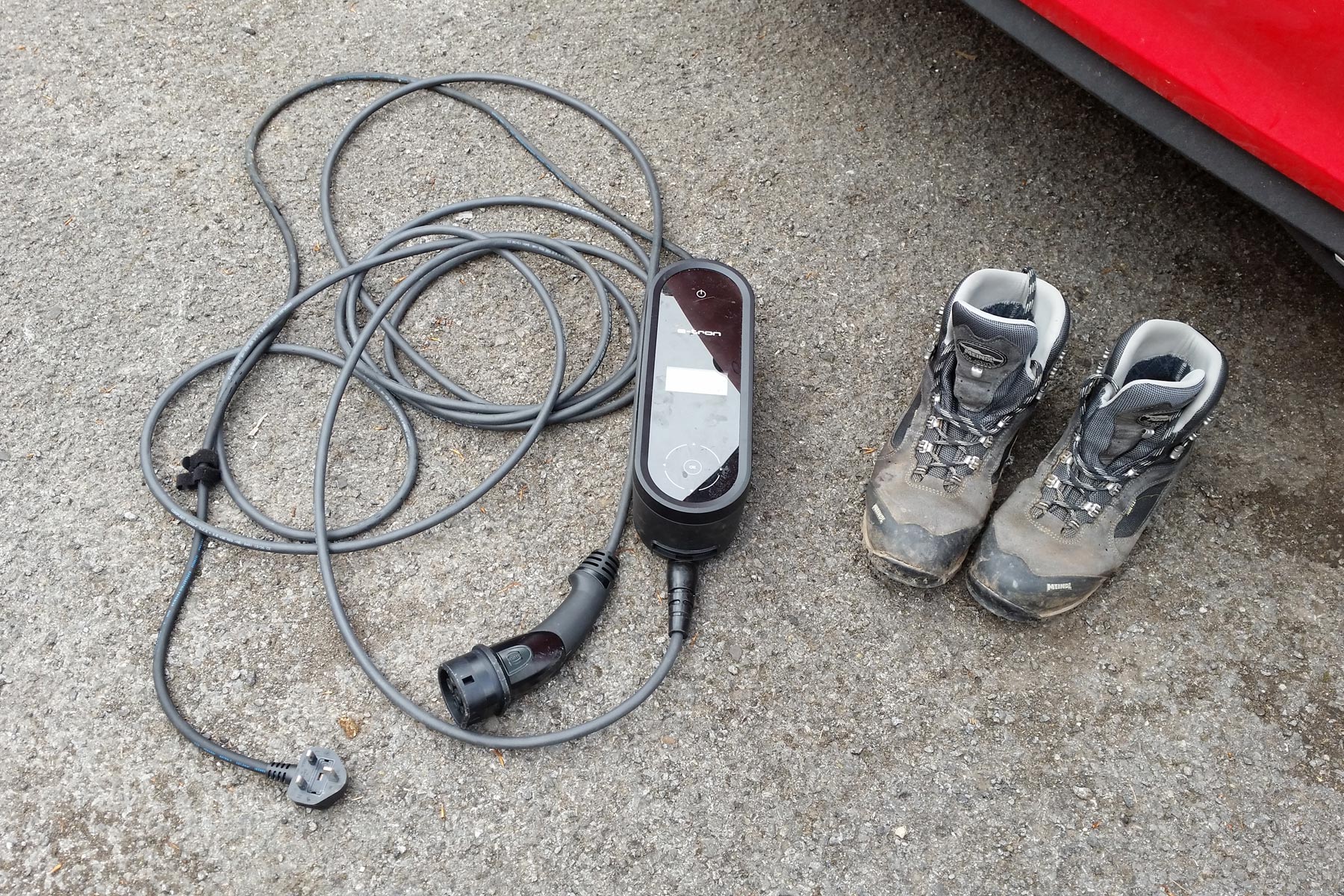
We got around the luggage issues by traveling with just three of us in the car, folding the wider portion of the rear seat down which gave plenty of cargo volume. In reality, it’s doubtful if you could even do this trip with four grown men and piles of walking gear in many mid-sized hatchbacks.
I travelled in the back of the A3 for a while, finding the seat cushion too low for me, meaning not much thigh support. There’s a fair bit of tyre noise there too. I blame those optional 18-inch alloy wheels and tyres. Best stick with the standard 17-inch fitments. They save fuel too.
My co-driver is used to driving an Audi A4 1.8-litre TFSI engine with 180bhp, but seemed satisfied with the level of performance of the 150hp 1.4TFSI in the e-tron, even if he never got to the stage of using the engine and electric motor at the same time. In reality, it’s something that very rarely happens when I am driving either.
So the 64,000 dollar question is how was the economy on the 650 mile trip? According the to trip computer, we averaged 50mpg on petrol, and there we also four fill electric charges.
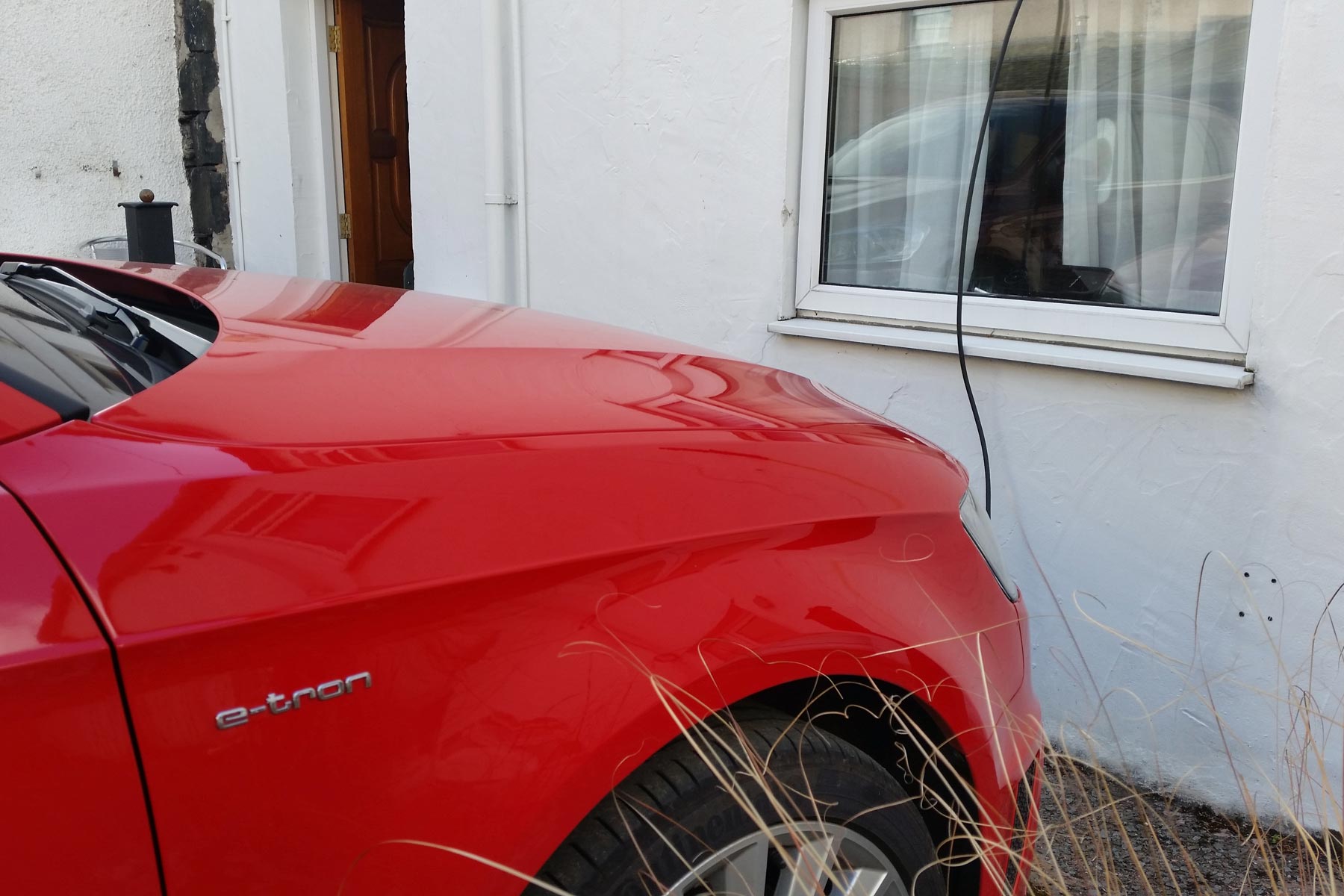
To me that seems a good result for a petrol hybrid. It’s two or three mpg less than Honest John reports drivers getting on the latest Prius, but the Audi encourages a brisker approach to driving. Of course there’s always someone who’ll say their diesel Mondeo is even more economical. Do they have a point?
Notebook
- The switch from electric drive to petrol, when the battery is finally depleted, is accompanied by the slightest of hiccups as the system moves preference. It’s not a bother, but it is noticeable.
Audi A3 Sportback e-tron (2015) long-term review month 4: Getting better all the time
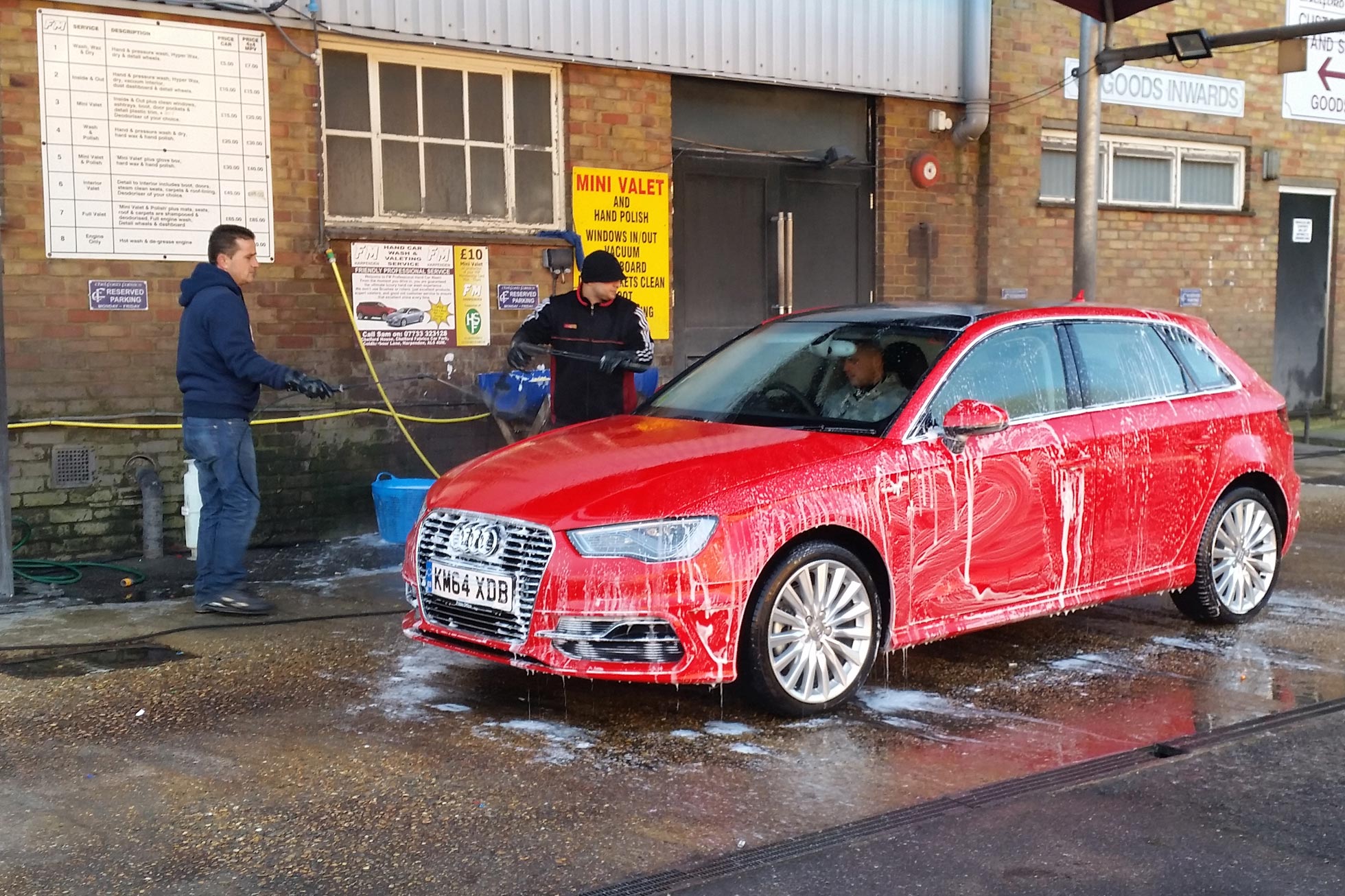
The weather is getting warmer and gradually the batteries in the Audi A3 e-tron are prepared to take on more charge. I saw the full 31 miles on the dashboard display one morning, though that seemed it was a bit of an early call, because usually it’s still cold enough at night to restrict the suggested range to around 22 miles. And that’s even with a charge during the day at the public charging point in my local car park.
The e-tron is a fascinating car to drive, and I wonder if owners will go through a similar familiarisation process to mine. For the first couple of months I obsessed about maximising fuel economy, which naturally means trying to get as far as possible on electric charge alone. Realistically that has meant journeys of 15 miles or less can be done without any use of petrol, so if I just drive to and from work I’m emission free.
But the other side of the coin is that when you combine 150hp of the 1.4-litre turbocharged petrol engine with the electric motor, there’s a touch over 200hp available. That means the A3 e-tron is a proper sports hatchback, at least while there’s some power left in the battery.
And it is genuinely quick, reaching 62mph in a claimed 7.6 seconds if you really nail it. Coming with Audi’s S tronic automatic transmission as part of the package, getting strong performance is as easy as pushing your right foot hard to the floor.
There’s a caveat, however. The e-tron weighs a mighty 300kg more than the equivalent petrol A3. That’s like driving the car with four passengers in addition to the driver. You notice it most in the E-tron’s agility in the corners, where it’s simply not as agile and responsive as a non-hybrid Audi A3.
I am off to the Lake District next month for a few days fell walking and I reckon the A3 e-tron will be a good option. First, I will be able to test out the chargers at motorway service stations. Second, I really will have to use a significant amount of petrol to get there, so I’ll get a good idea of long distance economy.
And finally, there is the luggage space issue. It’s compromised by the big case for the power leads, plus the usual underfloor space found in the A3 hatch is taken up by batteries and electronics in the e-tron. I am going to have to work my way around this somehow.
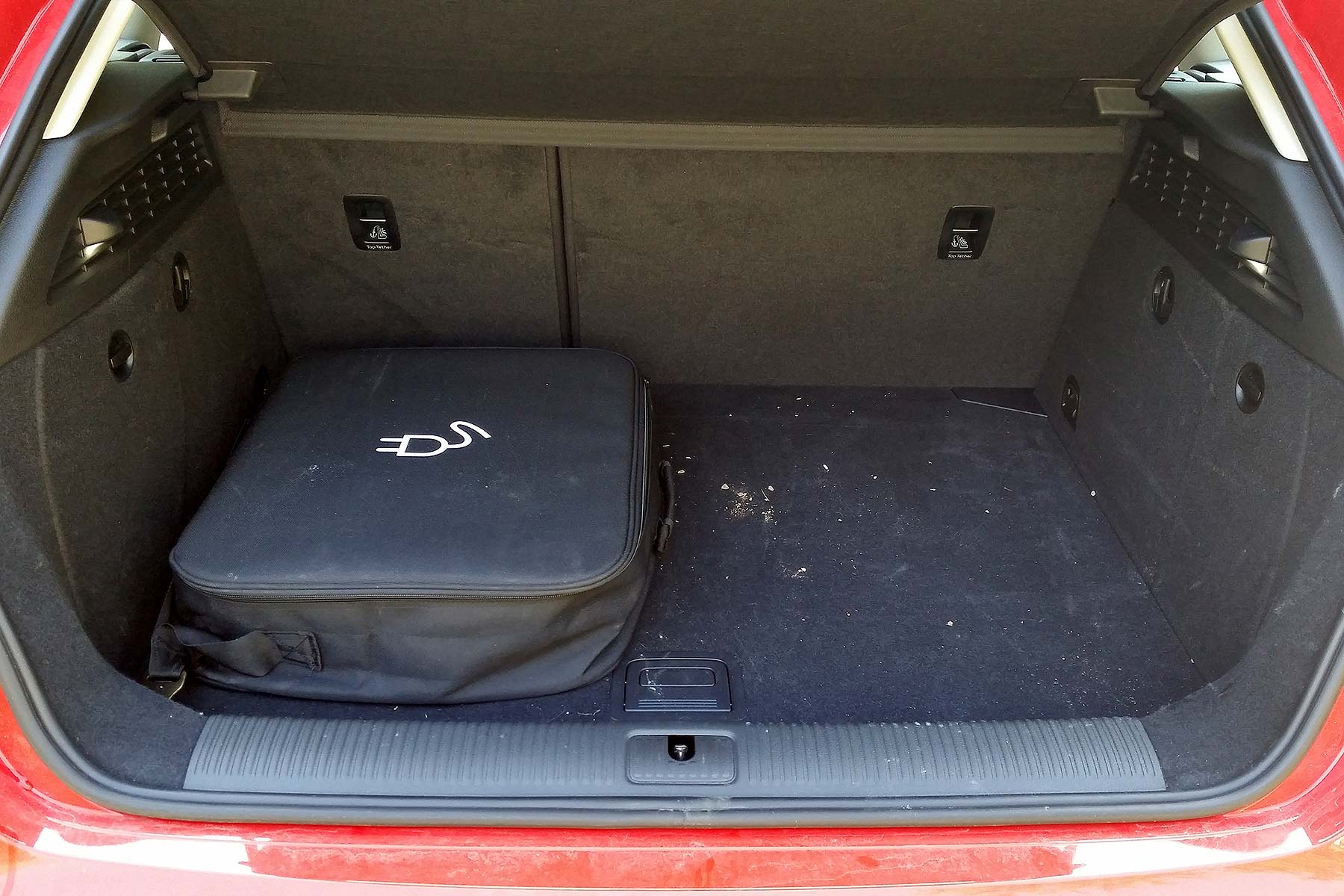
Notebook
- The quality of Audi’s solid red paint really rewards a good clean: when pristine, it looks superb
- The fact this eco car’s almost as powerful as a Volkswagen Golf GTI continues to impress. Owners will need lots of willpower to chase the economy it was designed to return…
Audi A3 Sportback e-tron (2015) long-term review month 3: 300 miles, £23
People stop and talk to you when you drive an electric car. Mostly they want to ask about this A3 e-tron, what its like to drive and how far it will go on a charge of electricity. Absolutely no one has balked at the mention of its cost, £30k after the £5k government grant. If you are buying an Audi, and a high tech one at that, it is never going to be cheap.
Last report I promised to cover in more detail just how it’s working out as a plug-in hybrid. Here are the hard facts. Audi says its A3 e-tron will cover 31 miles on a full charge of electricity. The reality is that the computer predicts a maximum of 23 miles after it has been fully charged.
That should, given a following wind, get me to work and back. Yet I only manage around 13 miles before the electronics switch from battery to petrol power. Audi has some good answers to both of these points.
First, in the cold weather of winter, the capacity of the battery falls off. Thus the 23 rather than 31 miles on the dashboard instrumentation. Second, the heating, heated rear window and heated seats take their toll as I drive. I am guessing the daytime driving lights and power steering do too.
What does all this mean? I the A3 e-tron each night at home and reckon it costs me £1.36 of Scottish Power’s best. I could half that if I had one of those meters that offered night time tariffs, but I don’t. So, 10 pence a mile, roughly.
But I also am lucky enough to have a public charging point just a few hundred meters from my office in Harpenden, so as soon as I get to work I recharge for the trip home. After I paid my £10 annual charge for access to the public point, it’s all free from then on.
You’ll have worked out by now that short trips can be done solely on electricity, which is a GOOD THING. On this tank of fuel I have covered 300 miles and only used a quarter of thank of petrol. As the tank in the A3 e-tron is just 40 litres, I calculate the cost to be:
Petrol: £11
Home electricity £12
Public electricity: £00
Which equates to £23 for 300 miles. Great value and clean green motoring too.
The downside is that longer trips don’t give such a handsome return. The default operation is for the A3 to drive in EV mode until the electricity runs out, then switch over to “Hybrid Hold”, which is basically petrol power with an occasional bit of battery recharging thrown in.
But there’s a third mode, “Hybrid Auto” which you have to select manually, that I rather like. On my 80 mile round trip to Heathrow, it retains enough electrical power to help on the trip home, and I can still get economy of over 60mpg on the petrol side of things.
The final option is to set the A3 e-tron to “Hybrid Charge”. That mode makes a very determined effort to recharge the battery by utilising the petrol engine. It’s not a sensible idea, using heavily taxed petrol as a generator fuel for the battery. Wait until you can plug-in.
So that’s it. Far from straightforward, especially if you start thinking about the technology too deeply. Buyers, I suspect, will largely let the A3 e-tron do it’s own thing and be perfectly happy. Roll on the warmer weather and better electrical mileage.
Notebook
- The switch from electric drive to petrol, when the battery is finally depleted, is accompanied by the slightest of hiccups as the system moves preference. It’s not a bother, but it is noticeable.
Audi A3 Sportback e-tron long-term review month 2: parking mad
I’m lucky. I already have a Pod Point electric car charging station at my home, so I knew I’d be on a home run when it came to topping up the Audi A3 e-tron’s battery.
Except no, the damn thing won’t plug in because wall fixture is a Type 1 connection and the e-tron is a Type 2. It’s a simple matter of the connections being ever-so-slightly different.
So all it needs is an adaptor, I think wistfully. No. The rules forbid something so blindingly obvious. Why, after all, pay all those European bureaucrats to do nothing when they could be dreaming up another stupid law? The long and short of it is it’s going to cost £1,000 to reinstall the Pod Point with a new universal system.
Perhaps I should do it as this is not the first time I have been scuppered. Neither the Tesla nor the Twizy were compatible either, but I decided first to try the alternative 13-amp mains connection that is also supplied in the boot of the A3 e-tron.
It works just fine. During the day I leave it connected to the mains with the cables tucked beneath the Lotus, where my Elan is in winter hibernation in the garage. When I get home it is a matter of only a minute to open up and plug in the Audi. By the morning it is fully charged and raring to go.
I am not sure how long it is for a full charge to be taken on. The manual says 4-5 hours. But it takes 4 hours on the public charging point in Harpenden, and that runs at 32 amps, so it must take longer at home, surely? I need to check.
Parking up the wrong tree
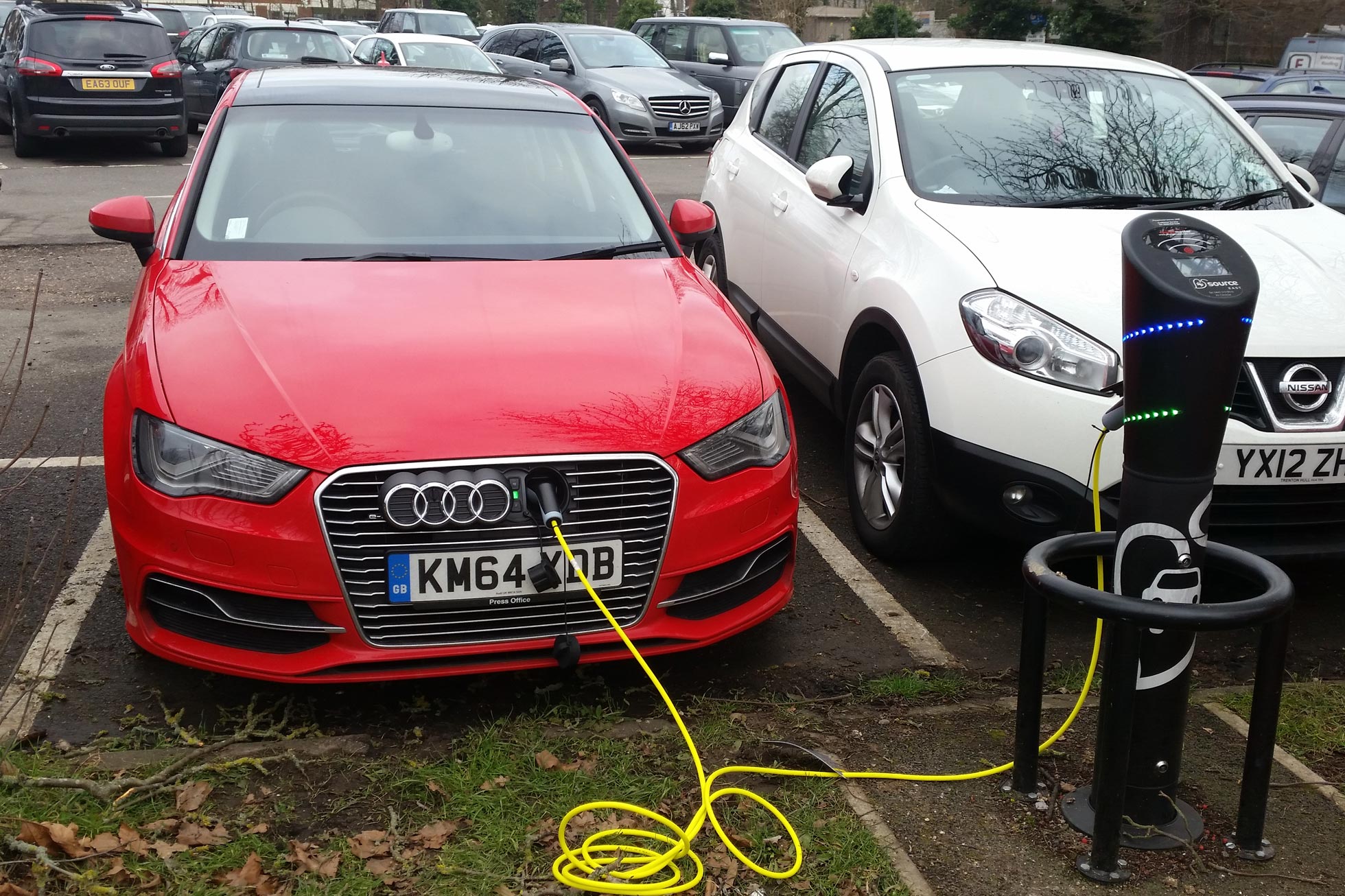
If you follow the debate about electric cars and plug-in hybrids, you’ll know that recharging at public points is a real issue. On the positive side, for £10 I have bought a card that gives me access to a wide range of recharging points, for up to a year. Parking is sometimes free too – you get 4 hours in the Gatwick short-term car park, for example.
But councils are largely pathetic at making sure that the space adjacent to a public charging point is kept free. It could be dead easy. Simply paint over the space in the same way that disabled spaces are highlighted and you’d have your answer. Yet despite the enormous sums that have gone into the infrastructure, little is done to make it work.
At least in the St Albans area. I tweeted the council, who responded quickly with a telephone number for me to call. It was the district parking office, who told me it was illegal to use the electric parking spaces with a non-electric car, and they would send a warden around to ticket the cars. Did they? Did they heck.
Still, for the past week I have had decent access to the public charging and I must say it is very useful. It means I can do the whole trip to and from work in the A3 e-tron on electric power alone.
I have just refilled the petrol tank, the first proper tank-to-tank measurement. Overall the A3 e-tron recorded 71.6mpg . To me that seems pretty damned impressive, even though, for the time being, I am ignoring the cost of the dozen charges of electricity that I really should throw into the equation.
65% of that was “emission free”, says the trip computer. That was achieved by a combination of electrical motion and the significant amount of free-wheeling with the engine switched off that’s all part of the e-tron package.
You’ll want to know about the A3 e-tron’s range on electricity alone. It varies a great deal. More when I have a fuller picture.
Notebook
- When you set off the default mode is always fully electric drive. Yet as soon as the petrol engine is deployed, usually by demanding a moment of extra acceleration, electric drive becomes a no-go area. Even if there’s lots of charge left, the only way to get at it is to switch back via the dashboard menu.
Audi A3 Sportback e-tron long term review: introduction
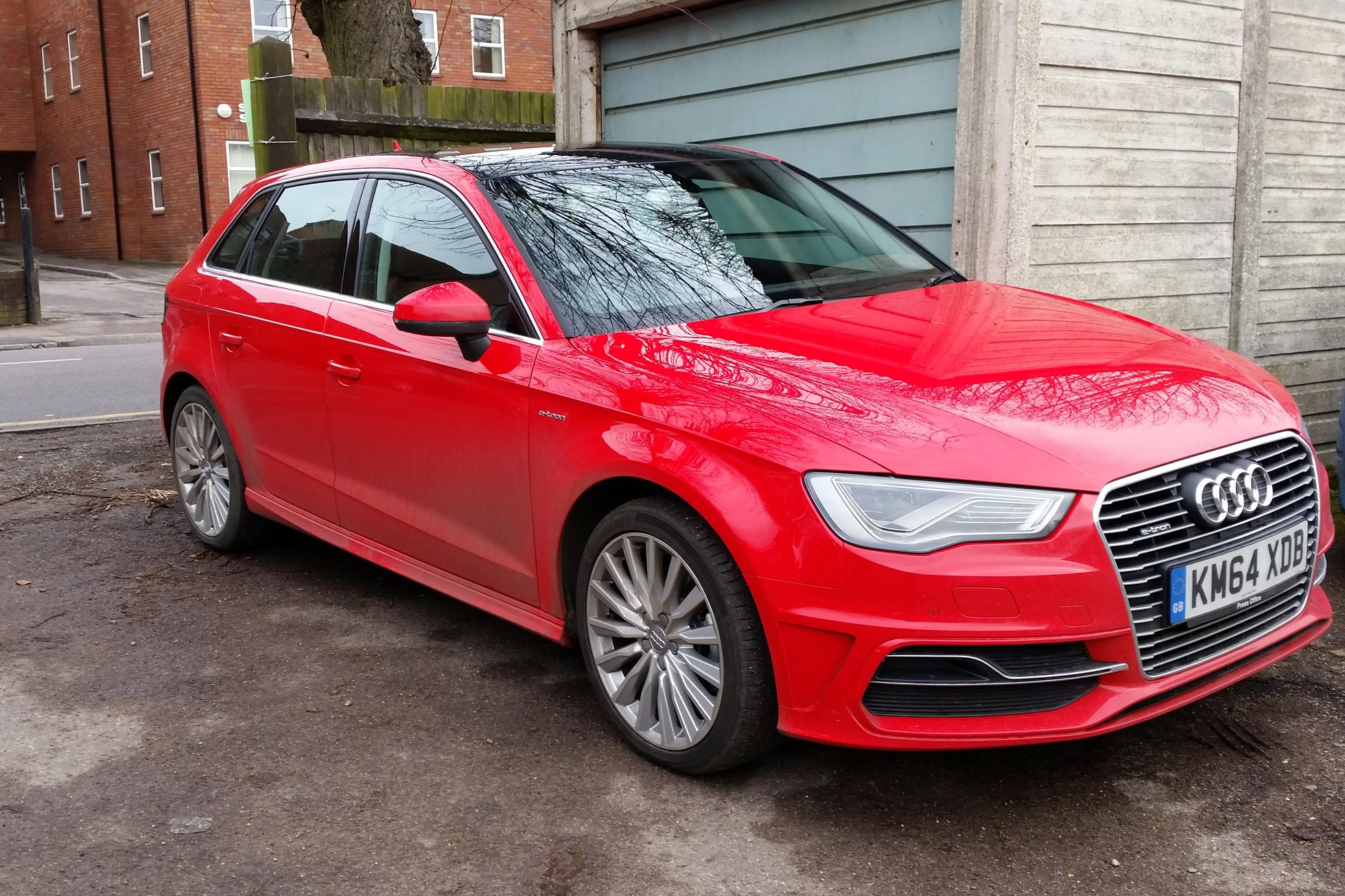
For the past three years my long-term test cars have been exclusively diesel crossovers. Well almost. There was a Fiesta ST for a few months in the middle. I find cars like the Hyundai ix35, Range Rover Evoque, Honda CR-V and Land Rover Freelander suit my lifestyle well. I even bought a Kia Sportage.
Being diesel, they are economical too. Well you’d think so, though everyone should know by now not to believe those laughable statutory economy figures the manufacturers love to quote. To put it simply, they all cheat. So the crossover that should be able to average 45mpg actually does around 30mpg. Less if its cold and the trips are local.
From diesel to petrol hybrid
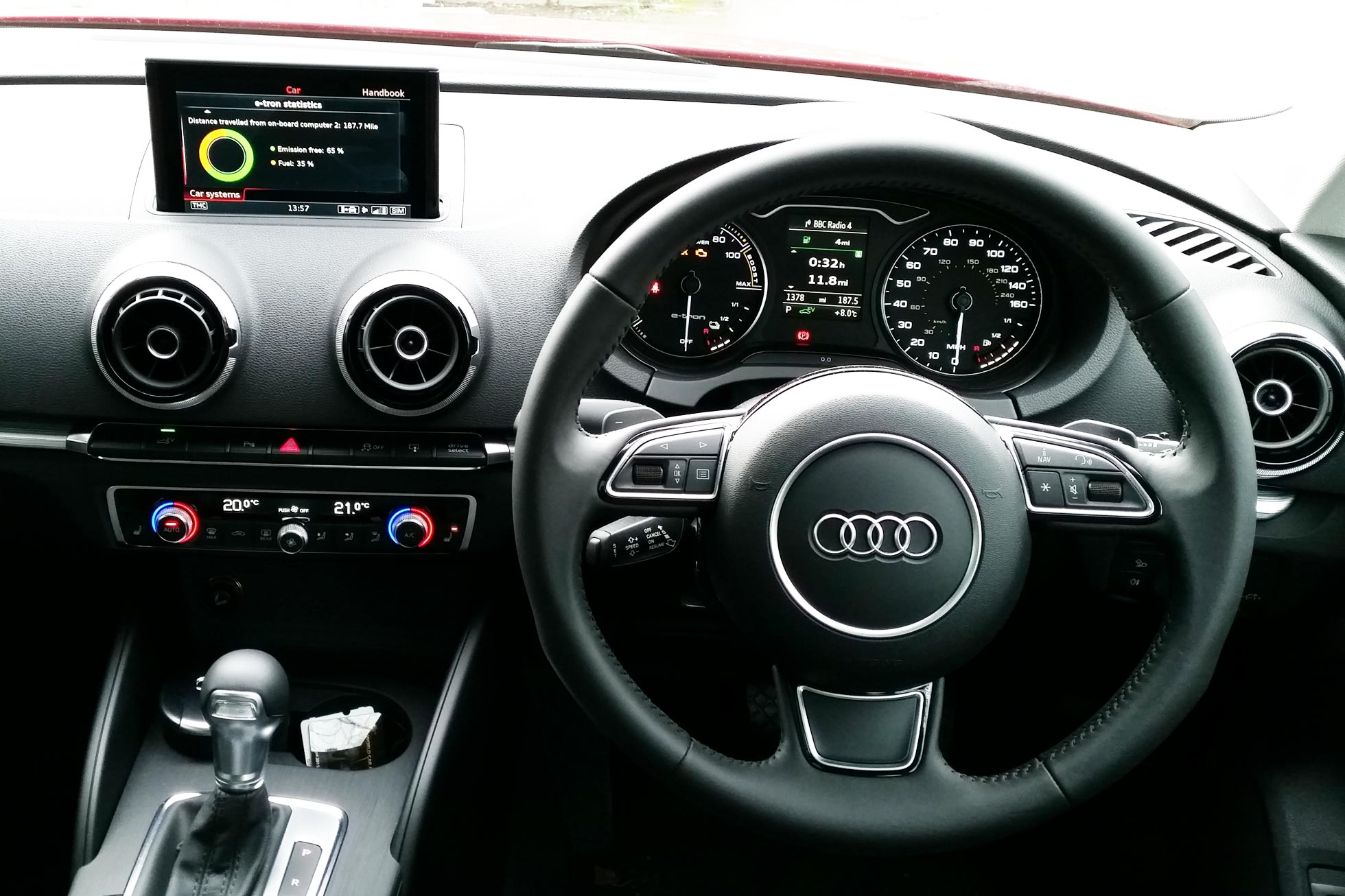
Which brings us to the Audi A3 Sportback e-tron. Audi’s first plug-in hybrid, it is a complete contrast to the cars I have been living with recently. It has a 1.4-litre turbocharged petrol engine with 150hp, plus a 100hp electric motor. Working together they can produce 204hp, not 250hp as you might have thought, but still plenty to give 0-62mph acceleration of 7.6 seconds. Hot hatch territory.
Then there’s the fuel economy. 176.6mpg! Can you believe it? This result sounds rather unlikely, to put it kindly, but the figure is calculated by taking into account recharging of the in-built batteries will take place at home or at public charging points and thus save you lots of petrol.
The CO2 is correspondingly low – 37g/km – which means the A3 e-tron qualifies for the company car tax rate and can be driven in London without paying the congestion charge.
A regular hybrid – think Toyota Prius and Auris, any Lexus, Honda Insight and many more – recharges the battery when you brake and coast, then uses the electric power to give the car a bit of boost. Usually the range on battery power alone is just a mile or two.
A plug-in hybrid, such as this Audi A3 and the alternative Prius plug-in, has a bigger battery, perhaps a quarter of the size of that in a fully electric car. You can therefore run a reasonable mileage on electric power alone, switching to the petrol engine when the charge expires. The best of both worlds with none of the “range anxiety” of the fully electric car.
These plug-in-hybrids are expensive. The base price of the A3 Sportback e-tron is £35k, and this car has another £5k in options – £1,115 for the leather sports seats, £995 for bigger alloys (than worsen the CO2 by 2g/km) and £950 for the panoramic sunroof, plus other things.
There is a £5,000 government grant at the moment for plug-in hybrids and electric cars that brings the price for entry to a more comforting £30k. Almost exactly the same as for Richard’s new long-term hybrid, the Lexus IS 300h. Now that’s going to be an interesting comparison.
So far I have had the A3 e-tron for a couple of weeks. It offers all the usual qualities that make the cost of an Audi seem worth the extra over, say a Toyota Auris or Vauxhall Astra. It feels like a classy piece of kit. But the real test is how it washes its face as a hybrid. Only time will tell.
Notebook
- The sports seats have so many adjustments that it takes dedication to find the best possible seating position.
- Fuel tank capacity is just 40 litres, smaller to give more space for the battery.
- Can’t see the 31 mile range on electric power displayed on the computer. In this cold weather it seems to charge to just 22 miles.
- There’s a choice of four driving modes for the hybrid system. Handbook not much help. Need to get to bottom of which is best.
- I am missing the reversing camera that I had on my previous cars. Having simple beeps – and only at the back – is mean.
Specification: 2015 Audi A3 Sportback e-tron
Price (January 2015): £34,950, less £5,000 government grant
Price with options: £40,025 (metallic paint £590)
Engine: 1.4-litre four-cylinder petrol turbo-electric hybrid
Power: 150hp (system total: 204hp)
Torque: 258lb ft
0-62mph: 7.6 secs
Top speed: 137mph
MPG: 176.6
CO2: 39g/km
